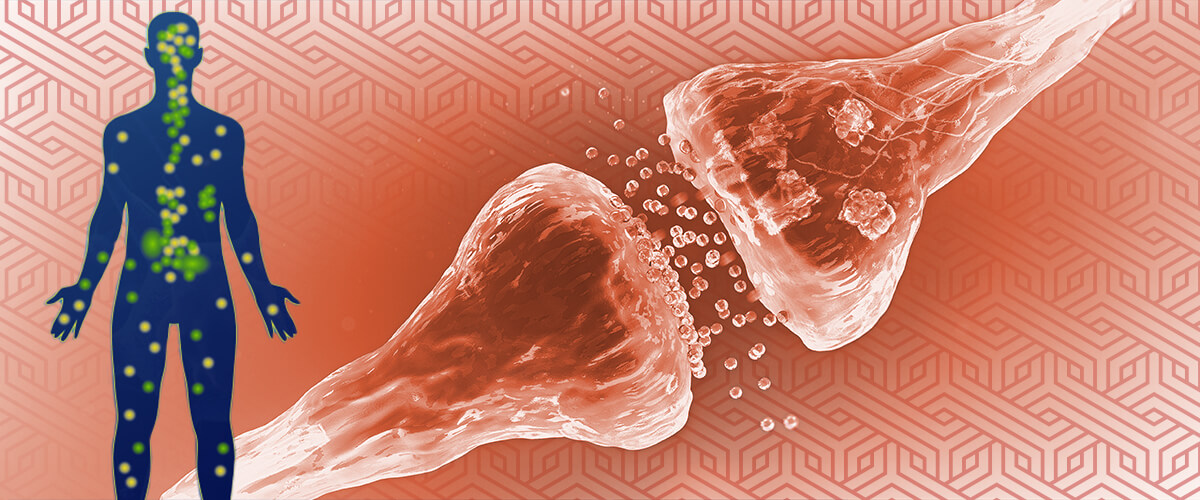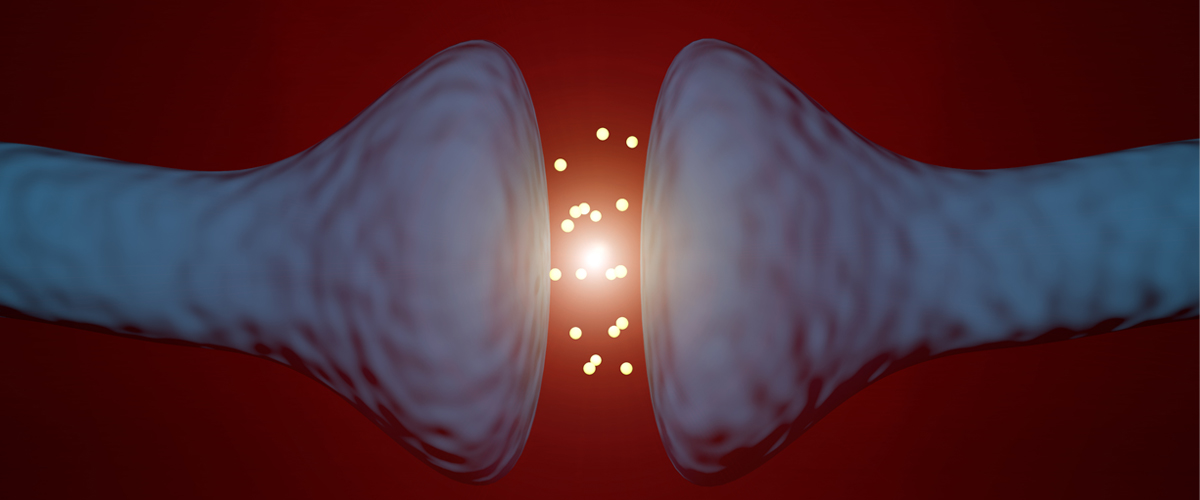The EC system is central to your health and wellness. Here’s how this self regulatory network works to keep you balanced and how you can support it with CBD oil.
As you set out to learn more about cannabidiol (CBD) oil and how it naturally promotes wellness, undoubtedly you will come across a reference to the EC system.
The EC system, or endocannabinoid system, is the reason CBD oil is able to encourage balance and optimal functioning in your body.
Are you curious as to how the EC system works and its purpose? Here we dive into the science behind the EC system, and discuss how with CBD oil products you can support its efforts to keep you balanced.
What is the EC System?
The EC system is a major signaling network responsible for keeping a wide array of our body’s functions balanced and running at their best.
Everybody has an EC system, which works continuously to keep important functions like mood, sleep patterns, appetite, memory, metabolism, immune response, and more, balanced and running optimally.
Anytime changes in the external environment cause a function under the EC system’s watch to become imbalanced, the EC system responds by triggering a series of chemical reactions designed to bring that function back to where it should be.
As you can imagine, a well operating EC system is crucial for reaching and maintaining health and wellness. There is even a theory referred to as endocannabinoid system deficiency that suggests that a dysfunction in the human endocannabinoid system leads to health issues. This theory, introduced in 2004 by Dr. Ethan Russo, also speculates that the EC system can be supported by consuming a class of plant derived diverse chemical compounds called cannabinoids.1
All mammals rely on the EC system to keep functioning running optimally, even your pets.
How Does the EC System Work?
Curious about the role of the endocannabinoid system in your body? Here is a bit more about how this self regulatory system functions.
Your EC system is made up of three components:
- Cannabinoids
- Cannabinoid receptors
- Enzymes that create and break down cannabinoids
Together, these three mechanisms work together to monitor many of your body’s functions and make adjustments as needed whenever they become imbalanced.
Let’s say, for example, that your immune system response becomes imbalanced and begins to dysfunction. Your EC system responds by triggering the release of enzymes that synthesize cannabinoids, or endocannabinoids.
What do endocannabinoids do? Once synthesized, these body-made cannabinoids — Anandamide and 2-arachidonoylglycerol — bind to cannabinoid receptors located throughout your body. The EC system predominantly consists of two types of endocannabinoid receptors: CB1, located primarily in the brain and central nervous system, and CB2, most densely populated throughout the peripheral nervous system.
Once activated by cannabinoids, these cannabinoid receptors adjust the passage of proteins between cells, sending out signals for the body to make the adjustments necessary to get your function, in this case your immune system response, back to where it should be.
Once a function is back in balance, the EC system “turns off” the process by triggering the release of enzymes that break down cannabinoids so they no longer interact with receptors.

How to Support the EC System
Incorporating cannabinoid products like CBD oil into your daily wellness routine can help support your EC system and its efforts to keep the body and its functions balanced.
CBD oil is a botanical extract made from high-CBD, low-THC hemp. CBD, short for cannabidiol, is one of over 100 plant-derived cannabinoids (phytocannabinoids) presently identified in cannabis plants. In hemp, CBD dominates the plant’s makeup.
Just like body synthesized endocannabinoids, plant derived cannabinoids like CBD interact with your EC system’s cannabinoid receptors. Through its interaction with cannabinoid receptors, CBD stimulates the EC system, encouraging the regulatory system to more efficiently keep functions level.
As you read more about the endocannabinoid system and CBD, you’ll discover that CBD doesn’t directly activate the EC system’s CB1 or CB2 receptors. Instead, CBD interacts indirectly with them and works to suppress the CB1 and CB2 activating qualities of other cannabinoids.
Most people do very little to support the health of the EC system because cannabinoids have not been part of the average diet for decades. Regularly taking CBD oil products can augment the body’s own cannabinoids to support a properly operating EC system.
While derived from cannabis, CBD is not intoxicating. This means it will not cause any temporary euphoric effects like THC, or tetrahydrocannabinol, a cannabinoid associated with marijuana.
Hemp naturally contains no more than 0.3 percent THC by dry weight. As such, CBD oil derived from hemp contains only trace levels of THC, far less than the amount needed for intoxicating, or a “high.” Supporting the EC system with CBD oil has been found to be safe with no serious adverse side effects. This is particularly beneficial for anyone interested in the natural balancing properties of cannabinoids yet want to avoid intoxicating effects. Here is more about the differences between CBD hemp oil and marijuana.
Once extracted from hemp, CBD oil concentrate can be taken on its own or infused into various types of products, including CBD tinctures, CBD capsules, CBD vape oil, CBD topicals and body care products, and more. It can also be refined to create concentrated products like CBD isolate. There are even CBD products for pets.

Myths Surrounding the EC System
With all the contradictory and confusing writings out there about the EC system, it can be hard to determine what is truth and what is misinformation.
There are several misconceptions about the EC system that regularly pop up if you search, “What is the EC system?” Here we address the four most common EC system-related myths to help clarify any confusion you have about the EC system and how it works.
Myth #1: The EC system emerged in the human body because of cannabis use.
Scientists did first discover the EC system by retracing the metabolic pathway of cannabis derived cannabinoids. However, the EC system did not emerge in the human body because of the use of cannabis and absorption of its cannabinoids. The EC system was already in place, allowing cannabinoids like CBD to interact with the system and encourage its performance.
Myth #2: CB1 receptors are only in the brain and central nervous system, while CB2 receptors are only in the peripheral nervous system.
While it’s true that CB1 and CB2 receptors are most heavily concentrated in these areas of the body, both types of receptors are more widely distributed and found on cells all throughout the body.
Myth #3: THC binds to CB1 receptors and CBD binds to CB2 receptors.
Like all cannabinoids, THC and CBD both interact with the EC system and its specialized cannabinoid receptors, CB1 and CB2. However, while THC directly binds with both CB1 and CB2 receptors, CBD has little affinity for the two receptors and doesn’t bind to either. Instead, it acts as an indirect antagonist and suppresses the receptors’ abilities to be activated by other compounds.
Myth #4: Cannabinoids are only found in cannabis plants.
Cannabinoids and cannabinoid-like substances that interact with the EC system are actually found in many plants. Outside of hemp and marijuana, cannabinoids are found in Echinacea, electric daisy, helichrysum umbraculigerum, liverwort, black pepper, cacao, black truffles, and more.

More About the EC System and CBD
There have been thousands of studies done on cannabinoids and their potential benefits. Learn even more about the EC system and how its efforts can be supported through the use of CBD oil products by visiting our CBD Oil Education page.
References:
- Russo, E.B. (2004, Feb-Apr). Clinical endocannabinoid deficiency (CECD): can this concept explain therapeutic benefits of cannabis in migraine, fibromyalgia, irritable bowel syndrome and other treatment-resistant conditions? Neuro Endocrinology Letters, 25(1-2), 31-9.






